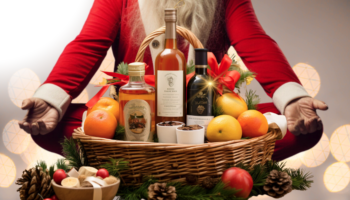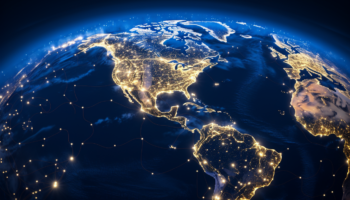The Ultimate Guide to
Cacao
Overview
01The first Mesoamerican civilizations that cultivated the tree and its fruit considered it a gift of the gods and brewed cacao-based elixirs for medicine, ritual ceremonies, and social gatherings. European colonial societies then exported and experimented with cacao until it could be industrially processed and mass-produced with other additives like sugar into the wide variety of chocolate-based foods and cocoa butter-based beauty products that are marketed around the world today.
In recent decades, however, some Westerners have revived interest in more traditional methods of cacao preparation, highlighting the oft-ignored pharmacological properties of this ancient plant medicine. With less processing and additives, cacao acts as a cardiac stimulant whose heart-opening effects can truly be appreciated upon consumption.
Ceremonial cacao paste has become increasingly employed for ritual and mindfulness purposes. Many users claim that this ceremonial cacao paste has physical and mental health benefits distinct from even the darkest of dark chocolates you’d find at the grocery store.
Though not as illicit as other mind-altering substances we’ve covered here at Third Wave, there’s still a lot of conflicting information circulating about cacao and the many forms it may take. In this article, we’ll give you a primer on cacao’s complicated history and its resurgent ceremonial use to explore how you might integrate it into your own healing and wellness practices.
Experience
02Ceremonial Grade Cacao vs. Culinary Cacao
Though not a regulated term, ceremonial cacao refers to a near-raw form of cacao bean paste (cacao seeds are commonly referred to as “beans”) with allegedly higher concentrations of beneficial compounds than those processed and sold for culinary purposes.
This high-quality cacao is harvested from a specific type of Theobroma cacao tree called Criollo. Criollo trees are less hardy and have a milder taste than the Forastero variety used for mass production by the chocolate industry, but their fruit contains more of the consciousness-altering compounds like theobromine and serotonin that ceremonial cacao drinkers are after.
Growing location and processing methods are additional variables in defining ceremonial-grade cacao and its effects. Ceremonial cacao should be minimally processed and small-batch sourced from its indigenous range in Central and South America employing traditional production methods. This means fermenting and lightly toasting the seeds, hand-peeling their husks, and stone-grinding them into a paste that then hardens into the block or saucer form in which it’s sold. This method allegedly activates the fat stored in cacao’s cells without heating away any of its beneficial natural compounds.
Contrast that to the more involved production for “raw” cacao powder or cocoa powder sold in health food stores. Produced and fermented at scale, Forastero cacao beans are then industrially heated, peeled, and milled before being pressed through a process called “Dutching” that separates the fats from the solids into cocoa butter and industrial cacao cake, sometimes broken up into small pieces and sold as cacao nibs. Pulverizing this into a powder results in a more uniform version of cacao that won’t produce the same bodily sensations and is often combined with other ingredients, namely sugar, that would effectively obscure them anyway.
What to Expect
Ceremonial cacao is generally chopped into shavings and dissolved in hot water to consume as a beverage similar to hot chocolate. But without all the added sugars, a ceremonial cacao drink won’t produce the same head rush and the taste is somewhat bitter. With a caffeine content comparable to a cup of decaf coffee, it also won’t stimulate the nervous system and cause the buzz of coffee-like jitters.
What it does do is stimulate the cardiovascular system. The effects are described as a warm and uplifting, alert yet comforting, “hum”, with a heart-opening sensation inspiring greater receptivity to one’s feelings and vulnerabilities. You may notice a boost in talkativeness, empathy, tactile sensation, and sense of self-love.
At high doses, the experience could be compared to a milder dose of MDMA or to other peak experiences of openness and connectedness unrelated to any particular substance. The resulting state is not as rooted in shifts of consciousness as more psychedelic medicines such as cannabis or psilocybin.
Dose
Other than the form and quality of cacao, how much you use will be the main variable determining what kind of experience you have. Take too little and you might feel nothing at all, but take too much and you could end up experiencing nausea, headache, or even, for some users, heart palpitations.
Generally, a standard ceremonial dose would be around 42.5 grams of shaved cacao paste. It’s recommended, however, that new users start at about half that amount and work their way up until they feel a sufficient reaction.
In experimenting, you may feel comfortable ingesting up to 60 grams, or about two ounces, in one sitting for stronger psychoactive effects, but any dose above 55 grams carries the risk of causing various symptoms of physical discomfort.
Ingesting only five to 10 grams will constitute a microdose, imparting the cacao bean’s cardiac benefits with little to no noticeable effects to your conscious state of mind. Check out Third Wave’s Microdosing Course to find out more about how microdosing with intention can unlock the potential of cacao and other psychedelic medicines.
Pharmacology
Cacao is considered a superfood due to its high concentration of vitamins, minerals, and antioxidants called flavanols. In unrefined forms, it contains 145 distinct chemical substances, the most pharmacologically significant of which are theobromine, phenylethylamine, anandamide, MAO, and tryptophan.
A relative of caffeine, theobromine is theorized as a primary source of cacao’s addictive, stress-relieving properties that result in the notorious chocolate cravings, though more research is required to determine its neurochemical effects. Compared to caffeine, theobromine has two to three times lower affinity for A1 and A2A receptors in the brain. In metabolism, it’s converted into xanthine and subsequently methyluric acid.
Toxicity
There are several populations who should avoid pure ceremonial cacao and other cacao products. These include people with heart conditions or who are currently taking antidepressants or hypertension medications.
As a cardiac stimulant, theobromine can increase heart rate significantly, a potential danger for those with pre-existing heart conditions. In addition, theobromine is toxic to pets like dogs and cats, so ceremonial cacao should be kept well out of their reach, just like chocolate bars.
Cacao is also a vasodilator, meaning it opens the blood vessels, which can interfere or intensify the effects of hypertension meds. The tryptophan and MAO inhibitors in cacao could also cause synergistic intensification with antidepressants, increasing the supply of serotonin to potentially fatal levels.
Finally, as with any stimulant, too much cacao can cause harmful reproductive side effects in women who are pregnant or breastfeeding. When in doubt, consult your doctor with any concerns about how ingesting ceremonial cacao could interact with any current medications or conditions.
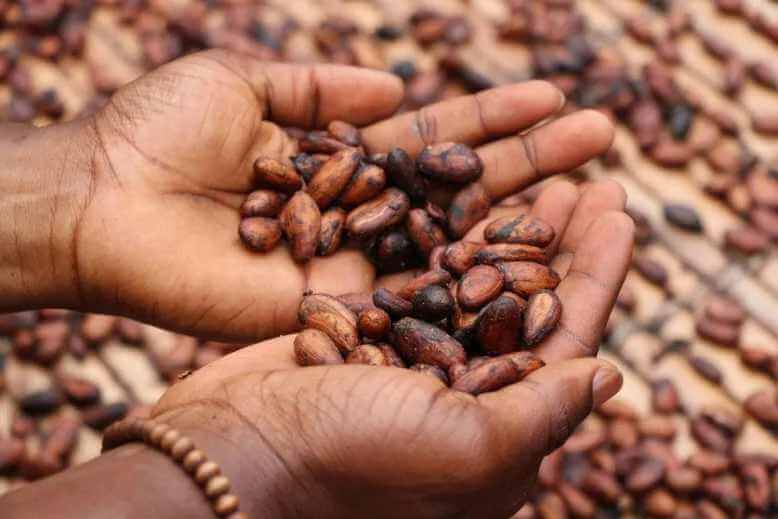
Benefits & Risks
03Potential Benefits
Cacao has a wide variety of health benefits impacting everything from cognitive function to the cardiovascular system and digestive tract. However, the process most chocolate makers use saps cacao beans of almost 60% of their antioxidants, which are compounds that protect our DNA from the damage of pollution, aging, and inflammation associated with cancer, diabetes, and heart disease. Thus, these benefits will be more pronounced from consumption of ceremonial cacao or even dark chocolate containing 60-70% cacao.
Cacao contains high levels of helpful nutrients like magnesium, iron, calcium, potassium, and phosphorus, thereby bolstering bone health, muscle contraction, nerve function, and more. Women tend to run lower on magnesium, especially when experiencing premenstrual syndrome (PMS). Cacao also improves digestive health with fibers that bacteria in the stomach eat to create fatty acid chains.
Dark chocolate has been shown to reduce stress and lower the risk of type 2 diabetes. One study found that higher levels of theobromine resulted in lower blood pressure and greater reported interest in tasks among participants.
In addition, greater consumption of cacao has been linked to lower risk of cardiovascular disease. The specific class of antioxidant flavonoids in chocolate, called flavonols, improves function of the blood vessel walls, or endothelium, resulting in greater insulin sensitivity and lower blood pressure. An Italian study showed that subjects who consumed higher amounts of cocoa flavanols per day had significant improvements in attention, memory, and cognitive function.
Cacao can also help protect neurons in the brain, enhancing cognition and positive mood while reducing the risk of dementia. Plus, it helps with weight loss, increases glucose uptake in the muscles, reduces inflammation, and lowers immunoglobulin E release in allergic reactions.
Like many other plant medicines, cacao also has an age-old reputation as an aphrodisiac, thanks to the presence of several “bliss molecules”. For one, phenethylamine is a stimulant present in cacao that’s also naturally released by the brain during experiences of falling in love. Tryptophan produces serotonin, a neurotransmitter elevating mood and arousal. Anandamide is another of cacao’s mood-boosting molecules, related to the “high” you feel after working out. Finally, it also stimulates the release of dopamine, soothing depression and stress.
RISKS
Chocolate tends to get a bad rap for negative health consequences that are actually more attributable to sugar, not cacao. Some claim, with limited evidence, that chocolate and other cacao products can be linked to depression, mood swings, paranoia, and addictive behavior.
There’s no doubt that ingesting cacao can be highly reinforcing and even habit-forming for many people, but it’s still less addictive than the sugar and other inputs of fat and carbohydrates with which it’s usually processed.
Nevertheless, cacao does contain the stimulants of theobromine and (in very low doses) caffeine, which can be problematic for pregnant women or individuals with high blood pressure or heart conditions (see Toxicity).
When paired with coffee or other caffeinated substances, the stimulant effects can compound into a headache and unpleasantly racing heartbeat. Too much cacao could also cause sleeplessness, anxiety, lightheadedness, sweaty palms, and nausea. Specifically, these symptoms result from theobromine doses of 0.8 to 1.5 grams per day, or the equivalent of 50-100 grams of cocoa powder.
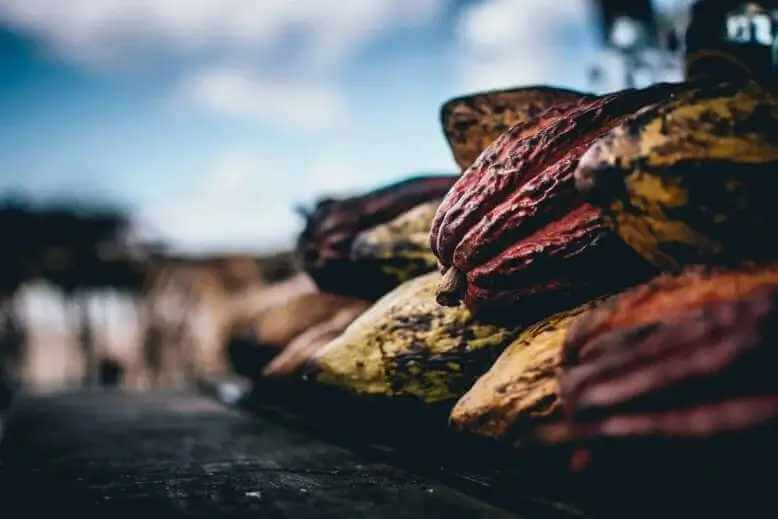
Therapeutic Use
04To the Aztecs and other pre-colonial civilizations, cacao was both a fixture of social gatherings and a common ingredient in treatments for infection, diarrhea, fatigue, dysentery, and hemorrhoids, with the chocolate flavor often used to mask the flavor of other medicines. In the 16th and 17th centuries, Westerners experimented with cacao to treat additional ailments like chest pain, fever, and kidney problems. In the 18th and 19th centuries, it was used to induce weight gain and counteract the effects of smallpox or malnourishment of soldiers in the American Civil War.
The anti-inflammatory, fever-reducing, and pain-relieving properties noted throughout cacao’s history were confirmed by a 2006 study, showing the flavonoids in cacao had cardioprotective effects on par with aspirin. Because of its long-theorized aphrodisiac properties, the Mayan ruler Montezuma was said to drink 50 cups of cacao per day to please his many wives, and to this day, theobromine is still marketed as a substitute for Viagra.
Cacao is such a versatile plant medicine it can be hard to grasp all its therapeutic dimensions holistically, especially in its common commercial forms. The heart-opening effects cacao ceremonies are supposed to elicit likely result from the neurotransmitter actions that stop stress hormones and release the “bliss molecules” detailed earlier.
Despite chocolate’s modern-day perception as primarily a junk food, cacao has always been recognized for its broad potential as a mind-body medicine. Ancient societies valued it not only as a social currency, but a tool to clear the mind and open the heart.
Geologist turned “chocolate shaman” Keith Wilson may be credited with sparking the modern-day interest in cacao ceremonies to improve creative intuition as well as physical health, with his farm and workshop in Guatemala seeding subsequent practitioners. This New Age use of cacao is little-studied and remains outside the mainstream of Western medicine.
Legality
05Sourcing
06While most industrial chocolate production now occurs in West Africa or the Caribbean, ceremonial cacao should come from small farms in Central or South American countries, including Peru, the Dominican Republic, Guatemala, and Ecuador. These operations should be rooted in traditional, manual production methods, and employ indigenous populations. Check the sellers’ websites for descriptions of their sustainability and Fair Trade labor practices before purchasing.
Some sellers we feel comfortable recommending are:
The Food Empowerment Project’s Chocolate List is another helpful resource grouping global chocolate makers based on ethical business practices.
Best Ceremonial Cacao Recipe
07For the most pronounced effects, this elixir should be consumed on an empty stomach with minimal external stimulation. Higher quality, minimally processed cacao will produce a more noticeable body sensation, especially when not obscured by lots of added sugar. That said, you may prefer to add a tablespoon or two of natural sweeteners like honey, agave, or date syrup.
Also feel free to add other medicinal herbs and spices like maca root or reishi mushroom tinctures to your preference. A stimulant itself, cayenne pepper is a traditional additive to cacao drinks and other elixirs and is claimed to increase their effectiveness.
Set and setting are primary considerations in determining what kind of cacao experience you have. It’s best to begin in a peaceful frame of mind, perhaps first thing in the morning, and pair it with ritual practices like meditation, yoga, or journaling.
The following cacao ceremony recipe yields one psychoactive dose per person. We recommend starting with about half the amount of cacao and working your way up to prevent unpleasurable side effects like headache and nausea from consuming too much.
Ingredients:
- 50-60 grams (about two ounces) ceremonial-grade cacao
- ½ tsp cinnamon
- Pinch cayenne powder, or to taste
- Pinch salt
- 8 ounces water
- Optional: 1-2 tbsp honey or other sweetener
Instructions:
- Chop ceremonial cacao into small pieces.
- Heat water, with cayenne added, to just before boiling.
- Add cacao, spices, and sweetener (if using) to water.
- Whisk or blend the resulting concoction until the chunks of cacao are completely dissolved and the beverage develops a foamy top.
- Serve and drink with a spoon to prevent cacao from settling at the bottom.
For a cold smoothie version, checkout this cacao recipe.
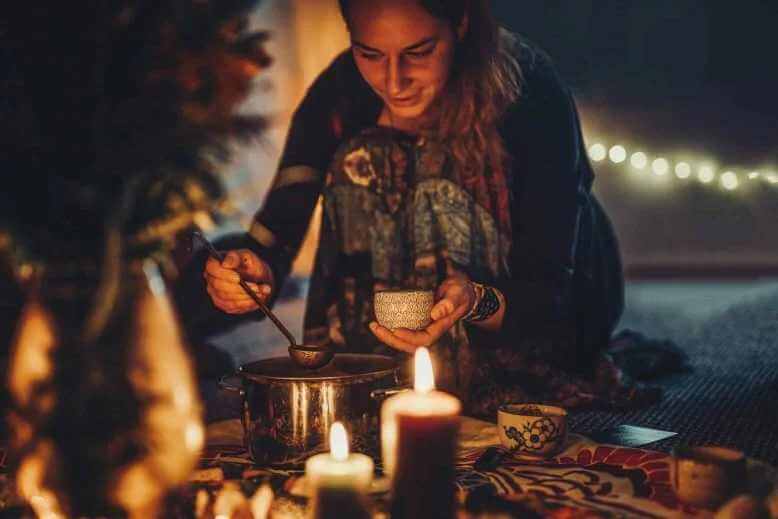
Ethical Considerations
08This legacy of labor exploitation continues in the chocolate industry today. In the Ivory Coast, the world’s leading grower of cacao, thousands of children employed in production are likely victims of trafficking or slavery. The exchange market for chocolate is supported by major corporations like Nestle, the fruits of this labor ironically enjoyed by children throughout the developed world.
Many chocolate producers have engaged in Fair Trade initiatives to fight undercompensation and marginalization of cocoa laborers. Their stated aim is to establish a system of direct trade with developing countries through programs like agricultural cooperatives, but their effectiveness in achieving this goal has been limited at best. As with many charitable efforts, there’s legitimate concern that terms like “Fair Trade” can function as an empty PR effort, giving the illusion of an ethical choice for consumers in an inherently unjust system.
In this context, any shift of focus toward ceremonial cacao over processed trinitario cocoa could be considered an ethical improvement. A greater awareness of cacao’s origins in nature and positive health benefits is already a step in the right direction towards mindful substance use and the archaic practices of honoring plant-human relationships.
By returning to small production on Mesoamerican farms, there’s little doubt that ceremonial cacao is the healthier, more ethical way to experience cacao, respecting its cultural and medicinal power as more than just junk food. Ceremonial cacao, however, could not hope to fulfill the same niche of global dependence that chocolatey sweets do currently, thus limiting the practical environmental benefits of the ceremonial cacao trade.
One other area of ethical concern is cultural appropriation. By most accounts, cacao ceremonies are a new phenomenon with little basis in how the Mayans or other early Mesoamericans enjoyed cacao fruit and pods. While it’s not necessary or perhaps even reasonable to assume the cultural practices of these prior civilizations, purchasing and preparing cacao with clear intention and historical context will help you incorporate it in a way that feels most appropriate to your specific time and place.
History
09It’s unclear when the trees were first domesticated, but some experts speculate cacao was fermented into alcoholic drinks as early as 1400 B.C. The residues of chocolate beverages in pottery from archaeological sites suggest cacao was consumed by far flung cultures such as the Olmecs in modern-day Mexico, the Mayo-Chinchipe in Ecuador, and the Pueblo people in the southwestern US, where they must have had it imported from elsewhere.
The Olmecs are the first known culture to have domesticated cacao, using it primarily for rituals and medicine. The Mayans considered cacao the drink of the gods and used it for just about everything, from official ceremonies and feasts to religious rituals and medical treatments. The preferred preparation mixed ground cacao seeds with chile pepper, cornmeal, and other seasonings for a spicy, frothy drink.
Later, the Aztec empire didn’t cultivate cacao, but nonetheless depended upon it as an import from conquered lands, which were forced to pay it as a tax and tribute. They drank it cold as an aphrodisiac or sometimes with wine as a post-banquet treat, while also still using it for medicinal purposes to treat diarrhea or dysentery.
Christopher Columbus was the first European to encounter cacao on his fourth and final voyage through the Americas when his nephew Ferdinand Columbus noted its value as a currency to the natives. Two decades later, conquistador Hernán Cortéz brought back three chests of beans from the Aztecs.
In 1585, the first official shipment of cacao to Europe made its way from Veracruz to Seville. Various physicians documented its medical uses before recreational consumption of cacao beverages caught on in the 1600s among the European aristocracy, who replaced the chile pepper with sugar. Further colonization of the Americas by other nations like England, France, and the Netherlands led to a greater supply and wider availability of both these agricultural products, cacao and sugar, with production largely dependent upon slaves.
In the 19th century, technological advances related to the industrial revolution evolved cacao into the processed chocolate forms we know today.
In 1828, Conrad J. van Houten patented the dominant method of preparing chocolate called “Dutching”. This entails using a hydraulic press to separate the fats of cocoa butter from roasted cacao beans and pulverizing the resulting cake into cocoa powder, which is then treated with alkaline salts to dissolve more easily in water. The powder can then be recombined with butter into the melt-in-your-mouth chocolate most of us were raised with.
In 1849, Englishman Joseph Storrs Fry made the world’s first eating chocolate. In 1879, Swiss national Daniel Peter used the powdered milk developed by Henri Nestle to create milk chocolate.
Many titans of today’s chocolate industry, like Cadbury and Hershey’s, got their start subsequently around the turn of the 19th and 20th centuries. After the fall of slavery in the New World, they maximized their market share and slashed prices by transitioning production to other equatorial regions in Asia and Africa.
The cocoa farmers themselves are now subject to the volatility of world markets. The world consumes about three million tons of beans annually, primarily for use in food and drinks, plus some for soaps and cosmetic products.
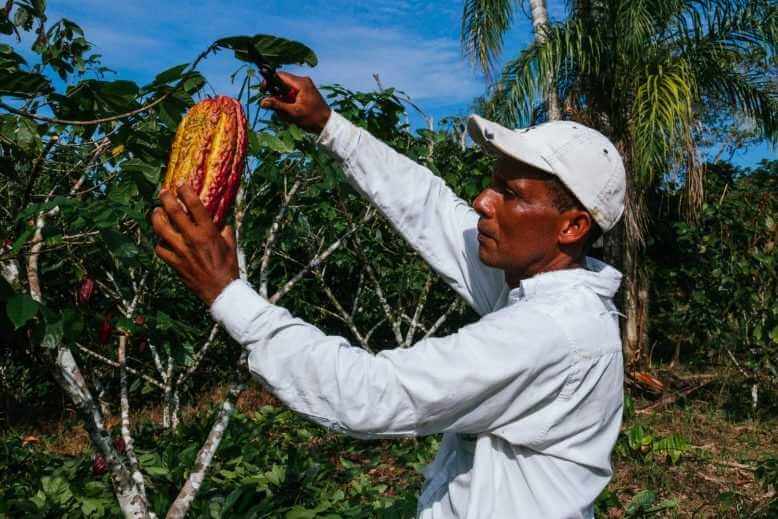
Myths
10That’s the classic myth of cacao’s creation, but today you’re more likely to hear lots of conflicting info about cacao’s health effects, such as…
“Chocolate has no nutritional value.”
See Benefits. Cacao is a superfood with numerous documented health benefits, although the production process of chocolate may reduce the presence and bodily uptake of flavanols and other beneficial nutrients.
“Chocolate causes pimples.”
As an anti-inflammatory, cacao is unlikely to cause skin problems. The connection between chocolate and bad skin is far more likely a result of the added sugar content.
“Chocolate has lots of caffeine.”
Chocolate does have caffeine, but a negligible amount. One serving of cacao contains about the same amount as a cup of decaffeinated coffee.
FAQ
11Is cacao psychoactive or a hallucinogen?
No. Cacao does have cognitive benefits and may alter one’s state of mind, but it will not produce hallucinations or significant shifts in consciousness like classic psychoactive substances such as LSD or DMT. Rather, its most noticeable effects are concentrated in the body and cardiovascular system.
Can cacao make you feel high?
Yes, but only a certain kind of high. Cacao is a stimulant like coffee, not a hallucinogen like cannabis or psilocybin, so the high is characterized by an increased feeling of alertness and bodily warmth.
Is cacao a stimulant?
Yes, but it stimulates the cardiovascular system, not like coffee, which stimulates the nervous system. Nonetheless, it does boost energy and engagement in tasks.
Does cacao increase serotonin?
Yes. Cacao contains serotonin as well as tryptophan, an amino acid that stimulates serotonin production. This neurotransmitter is involved in mood regulation, social behavior, sleep, memory, and sexual function. The levels of serotonin and tryptophan decrease drastically when cacao is heated, however, so raw cacao is better for purposes of stress relief.
What’s the difference between ceremonial cacao and cacao?
Cacao is a catch-all term that can be used to refer to the cacao tree, the seed of the cacao pod, or the cacao butter and cacao solids it’s processed into for sale and consumption. Ceremonial cacao is an unregulated term referring to cacao bean paste that is grown in small-batch Central to South American farms and prepared using traditional, non-industrial methods. See the above section Ceremonial Grade Cacao vs. Culinary Cacao for further explanation.
